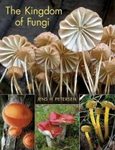Field / Identification Guide Identification Key
By: Bruce Ing(Author)
398 pages, 7 plates with 54 colour photos; 357 b/w line drawings
Unavailable for a decade, this guide to the identification of the myxomycetes of Britain and Ireland has been reprinted as a second edition with a 20-page colour plate section.
![The Myxomycetes of Britain and Ireland The Myxomycetes of Britain and Ireland]()
Click to have a closer look
About this book
Customer reviews
Biography
Related titles
About this book
A classic work and the first to comprehensively study this interesting life form, which has an important role in decomposing plant material. Myxomycetes (slime moulds) were once considered a special group of fungi. However, they are now grouped within Amoebozoa as unicellular protists that adopt a multicellular aggregate form in certain conditions.
Introductory chapters cover life history, structure, ecology, distribution, how to find and collect material, bark culture techniques, microscopic examination, and herbarium storage of ‘slime-moulds’. The detailed accounts cover identification, keys, descriptions and illustrations. They also include notes on differences from other similar species.
This is a reprint of the enlarged 2020 edition with a 20-page supplement including new species, together with 54 colour photos. It is a guide to the British and Irish species, including keys, descriptions, and illustrations showing the diagnostic features along with introductory chapters on life history, structure, ecology and distribution, collecting, techniques, and preservation.
Customer Reviews
Biography
Bruce Ing taught at Chester College, now the University of Chester, from 1971 to 2013 and is a Visiting Professor of Environmental Biology and an Emeritus Professor of Applied Science. He has studied fungi for more than sixty years and has published more than 200 papers on mycological subjects. He lived in North Wales for nearly forty years but is now retired to the north-west Highlands of Scotland where he continues to research the local fungi.
Field / Identification Guide Identification Key
By: Bruce Ing(Author)
398 pages, 7 plates with 54 colour photos; 357 b/w line drawings
Unavailable for a decade, this guide to the identification of the myxomycetes of Britain and Ireland has been reprinted as a second edition with a 20-page colour plate section.
































